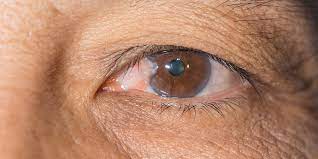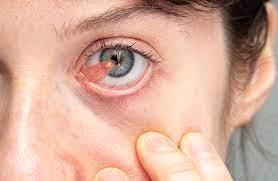Pterygium
Welcome to Bright Vision Care Hospital, where your eye health is our top priority. In this comprehensive guide, we'll delve into the topic of Pterygium, a common eye condition that can affect your vision and eye comfort. Our mission is to provide you with valuable information about pterygium, including its symptoms, effective do's and don'ts for management, recommended eye exercises, and expert care to help you maintain healthy, comfortable eyes.
Pterygium, often referred to as "surfer's eye," is a growth of tissue on the surface of the eye that can cause various symptoms and may require medical attention.
Symptoms
Pterygium typically starts as redness on the white part (sclera) of the eye. This redness may gradually extend toward the cornea.
Eye IrritationIndividuals with pterygium often experience persistent eye irritation, such as itching, burning, or a foreign body sensation in the eye.
Blurry VisionAs the pterygium grows, it can distort the shape of the cornea, leading to blurry or distorted vision.
Dry EyePterygium can disrupt the tear film, causing dry eye symptoms like excessive tearing, stinging, and discomfort.
Visible GrowthIn advanced cases, a visible fleshy growth may develop on the eye's surface, extending onto the cornea.


Do's & Dont's
Do's
Consult an Eye SpecialistIf you suspect you have pterygium or notice any related symptoms, seek prompt evaluation and guidance from an eye specialist.
Protective EyewearWhen outdoors, especially in sunny or dusty conditions, wear sunglasses or protective eyewear with UV protection to shield your eyes from harmful UV rays and irritants.
Regular Eye Check-upsSchedule routine eye examinations to monitor the progression of pterygium and overall eye health.
Artificial TearsUse preservative-free artificial tears as recommended by your eye specialist to relieve dry eye symptoms.
Surgery ConsiderationIf pterygium affects vision, causes discomfort, or continues to grow despite conservative measures, discuss surgical options with your eye specialist.
Dont's
Avoid RubbingRefrain from rubbing your eyes, as this can worsen irritation and potentially exacerbate the pterygium.
Limit Sun ExposureAvoid prolonged exposure to direct sunlight and harmful UV rays without protective eyewear.
Don't Use Redness-Reducing DropsOver-the-counter redness-reducing eye drops are not recommended for pterygium and can mask symptoms without addressing the underlying issue.
Don't Delay TreatmentIf pterygium is affecting your vision or causing discomfort, do not postpone seeking medical advice.
Self-RemovalUnder no circumstances should you attempt to remove a pterygium on your own. This can lead to complications and worsen the condition.
Exercises
While there are no specific exercises to treat pterygium, maintaining overall eye health is essential. Consider these eye care practices:
Ensure regular blinking to help distribute tears and keep the eye moist and comfortable.
Eye HygieneMaintain good eye hygiene by keeping your eyelids clean and free from debris.
Eye RestTake breaks during extended periods of screen time or intense visual tasks to reduce eye strain.
Eye ProtectionUse protective eyewear in challenging environmental conditions to safeguard your eyes from potential harm.
Follow Eye Specialist's RecommendationsAdhere to any specific eye care routines recommended by your eye specialist to address your pterygium and overall eye health.

Summary
Pterygium is a common eye condition that can lead to discomfort and vision problems if left untreated. At Bright Vision Care Hospital, we are dedicated to providing you with expert care and guidance to manage pterygium effectively. By following the do's and don'ts, protecting your eyes, and maintaining overall eye health, you can minimize symptoms and promote the well-being of your eyes.